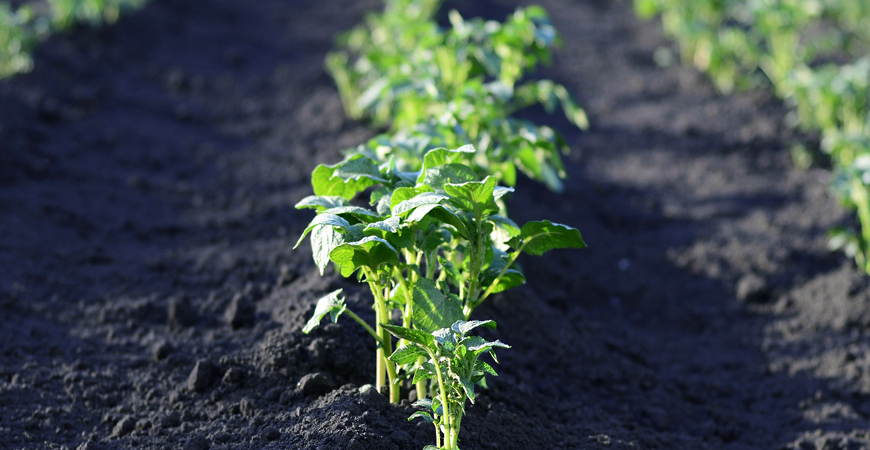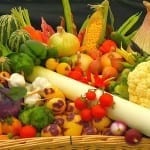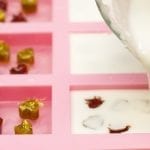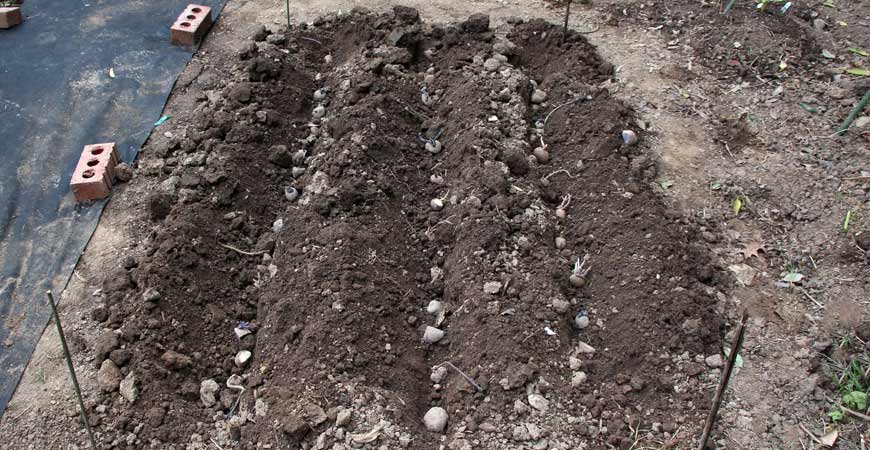
Top Tips for Planting Potatoes & Peas on St. Patrick’s Day
In some parts of the USA, it’s considered lucky to plant potatoes and peas on St. Patrick’s Day. If you live in hardiness zone 5, 6, or higher, the soil is usually ready by March 17th to plant early spring vegetables. See our how-tos for planting potatoes and peas on St. Patrick’s Day.
Planting Peas on St. Patrick’s Day
What types of peas can I grow?
There’s a wide range of pea varieties available to home gardeners. Choose a variety that’s best for your growing zone and garden space.
You’ll usually find one or more pea varieties perfectly suited to your garden. Below is a sampling of pea varieties:
- Alaska
- Green Arrow
- Kelvedon Wonder
- Laxton’s Progress
- Lando
- Little Marvel
- Maestro
- Risser Sickle
- Sparkle
Why should I start peas indoors?
The benefits of germinating pea seeds indoors include:
- If your spring weather is cold and rainy, any direct-sown seeds may become waterlogged and rot. Starting pea seeds indoors helps them sprout quickly, giving them a head start in the garden.
- Birds find and eat pea seeds planted directly in the garden. If the seeds are germinated beforehand, they will sprout faster. Birds usually won’t bother newly sprouted seeds.
What You’ll Need
- Pea seeds
- Paper towels
- Zip-top plastic bag
- Dampen the paper towel with water.
- Wring out excess water.
- Lay the wet paper towel on a flat surface.
- Place the pea seeds in the middle of the towel.
- Fold the towel to cover the seeds.
- Place the towel, with seeds, into the plastic bag and zip it closed.
- Lay the bag on top of the refrigerator. Let it sit for 3 days to allow seeds to germinate.
- Check the bag for needed moisture. If the towel is getting dry, add a little water.
- Your seeds should sprout in 7 to 10 days and be ready to plant in the garden.
Growing Peas in the Garden

Plant peas early enough in spring so they will mature while the weather is still cool. In most regions of the US and Canada, pea seeds should be planted in February, March, or April.
Plant your peas four weeks before the last frost date if you live in a more northern hardiness zone.
Peas are classified into three types – garden peas, snap peas, and snow peas.
- Garden peas are picked when the peas inside the pods are mature.
- Snap peas are picked when the peas inside the pod are tiny. The tender pods are harvested and ‘snapped’ before cooking.
- Snow peas are picked when the pods are very young, flat, and tender. No peas have formed in the pod. Snow peas are a popular ingredient in Asian dishes.
How early can I plant peas?
Direct-sow pea seeds in early spring as soon as the ground has thawed. The soil should be easily worked with a shovel. If you get a blanket of snow after planting – no problem!
Plant pea seeds 1 inch deep in the soil and 2 inches apart. Space plant rows 12 to 24 inches apart.
What type of soil do pea plants prefer?
Peas prefer fertile, loamy soil but will grow well in most soil types. So, avoid planting peas in heavy clay or sandy soil.
Soak the seeds in water for a few hours to boost germination before you plant.
And mulch peas to keep the soil cool and moist.
How much sunlight do pea plants need?
Select a sunny spot in the garden. Pea plants will grow in part shade, but they won’t produce as well as those grown in full sun.
How often should I water pea plants?
Peas need 1 inch of water per week, which they often receive from spring rains. Water pea plants lightly unless they appear to be wilting. And keep the soil evenly moist.
If you see seeds washed out of the soil, poke them back in with a finger or a chopstick.
Planting Potatoes on St. Patrick’s Day
What types of potatoes can I grow?
Potato varieties vary in texture, starch content, and moisture content. There are six main categories of potatoes:
Colored (Novelty) Potatoes have skin and flesh in colorful hues like pink, red, blue, or purple, making these potato varieties fun to grow and eat.
Fingerling potatoes are small and elongated with thin, tender skins. Fingerlings are delicious roasted or as the main ingredient in potato salad.
New potatoes are young, small, and harvested in early summer. The skin is thin and tender. New potatoes are often boiled whole and tossed with butter and parsley.
Russet potatoes are the best choice for baked potatoes. The skin will crisp during baking, making a perfect “jacket” for the fluffy interior. Russets are a top pick for mashed potatoes, French fries, and oven roasting.
Waxy potatoes have a dense fine-grained flesh that holds together when cooked. Waxy potatoes are ideal as an ingredient in potato salad, soups, and stews,
White potatoes are good all-purpose potatoes. They have a creamy texture and hold their shape when boiled.
How to Plant Potatoes
Cut seed potatoes into pieces, leaving two of the three eyes on each piece. Allow cut sections to dry before planting (2 days).
Plant potatoes piece four inches deep in the soil and spaced 12 to 18 inches apart. Plant pieces with the eyes facing up. If planting in rows, space plants 24 or more inches apart.
What type of soil do potatoes prefer?
Potatoes thrive in acidic, fertile, and well-draining soil. A soil with a pH of 4.8 to 5.5 is ideal.
Growing Potatoes in the Garden
When should I start planting potatoes?
Potato plants grow best in early spring, during cool weather. So, try and plant potatoes 2-4 weeks before the last frost or when the soil temperature reaches 40 degrees F.
Potatoes are usually planted from January to March and harvested between March and June. Although, this will depend on your growing zone.
How much sunlight do potato plants need?
Plant potatoes in a location that receives full sun to grow the best – at least six hours of light per day. Moreover, planting potatoes on St Patrick’s Day is an old Irish tradition.
How often should I water potato plants?
Potatoes need 1 inch of water per week. Applying mulch will help to hold in moisture and shield each young potato from the sun, which can turn them green.












